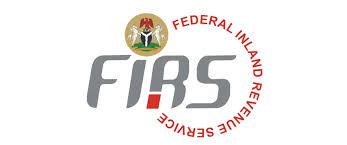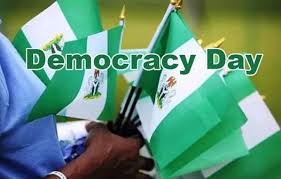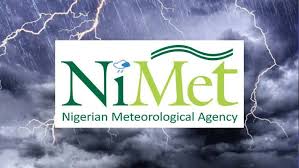Opinion
NATO’s Presence: A Pitfall Or Respite?
Following threats posed by post-World War II communist expansions across Europe, a coalition of western nations in 1949, formed the North Atlantic Treaty Organisation (NATO).After the defeat of Hitler’s Germany across occupied territories, liberation had opened domestic struggles for power as well as the demand for democracy and social justice, a struggle in which the communists and the socialists engaged themselves in bitter conflicts. From hardening dividing lines over one issue after another, the struggles became part of the bigger competition among the victorious nations over the booty of war, especially between the Soviet Union on one hand, and France, Great Britain and the United States of America on the other. In the ensuing struggles, the Soviets annexed Eastern European countries from East Prussia, Poland, Hungary to Romania, while occupying areas from the Adriatic to the Baltic regions, and forcing formerly independent states of Estonia, Latvia and Lithuania, into Soviet republics.
Russia applied crude coercion to install friendly governments in autonomous nations it did not annex. In those countries, anticommunist leaders were excluded from coalition governments, while propaganda campaigns, arrests and pressure were applied to eliminate non-communist parties, leading to consolidation of single-party dictatorships that operate on the Soviet model. In East Germany, the Soviets forcefully merged the Social Democratic party to a much smaller Communist party, then practically partitioned Germany into two, by granting independence to East Germany as the German Democratic Republic, situations which made the then British Prime Minister, Winston Churchill, see an “Iron Curtain” descending on Europe.According to Churchill, “A shadow has fallen upon the scenes so lately lighted by the Allied victory.
Nobody knows what Soviet Russia and its Communist international organisation intend to do in the immediate future, or what are the limits, if any, to their expansive and proselytising tendencies.” “… this is certainly not the Liberated Europe we fought to build up. Nor is it one which contains the essentials of permanent peace.” That speech, revealing the Cold War, set the rallying tone for the formation of NATO. Ever since, NATO has remained the world’s most powerful defence alliance. Heralding the organisation in 1949, United States President Truman called it “a shield against aggression.” NATO’s member nations declared that an armed attack against any one member state shall be considered an attack against all, with a further pledge to come to the aid of one another, stating NATO’s general aim as being to “safeguard the freedom, common heritage and civilisation” of its members, by promoting “stability and well-being in the North Atlantic Area.”
However, after long years of the cold war, leading to the disintegration of the USSR and the unification of Germany, some groups are questioning what remains of Russia’s territorial threats of the post-WW II era to warrant NATO’s continued high military spendings. Organisations like the No To NATO, who urge NATO to promote disarmament, say improving people’s lives should be prioritised over weapons and wars which create instability, deprivation, social injustice and environmental destruction. Organisations like the Pax Christi International are also worried about the tendency towards arms race, stock piling of nuclear arsenals and the policy of pre-emptive nuclear strikes. Defenders of NATO however point to Russia’s continued aggression, especially in Eastern Europe, and currently in Ukraine, and NATO’s efforts in limiting the spread of those tendencies, as the reason for the continued relevance of NATO. NATO has also aided in stabilising peace and to fight terrorists around the world.
However, with the expansion of NATO membership to include former Warsaw-pact member nations, Russia whose President, Vladimir Putin, the KGB boss during the USSR era, who continues to bemoan the loss of USSR’s former glory, accuses NATO of endangering Russia’s security by expanding towards its borders. However Russia’s old game of aggressive external meddling, domination and sense of racial superiority against its Eastern European neighbours, right from the time of Joseph Stalin to the present, could be the major driving forces that push its neighbours towards the more liberal fold of NATO. The current case of Ukraine is a clear example. Russia’s devastating attacks in Ukraine shuddered many Eastern Europeans, the European Union (EU) and the rest of the civilised world, so much so that Sweden and Finland have seen the need to join NATO, while Ukraine regrets not being there already.
In their bid to assist Ukraine defend itself against Russia, NATO members appear to have learnt lessons from the build-up to the 2nd World War, during which Adolf Hitler, parading under a pretext of resentment for the Versailles settlement conditions which exerted heavy war-guilt punishments on Germany due to its role in the 1st World War, annexed Austria, while the world looked aloof. But unsatisfied Hitler went for Sunderland two weeks later, under another pretext of protecting a German-speaking part of Czechoslovakia. In the lackluster negotiations that followed, war-wary Britain and France, willing to appeace Germany in order to avert war, persuaded the Czechs to concede. Yet unappeasable Hitler went beyond his demands, and took the whole of Czechoslovakia instead, one of Europe’s best industrialised democracies. With such successes, Hitler’s popularity raged at home, as high as he was dreaded abroad.
He became more adventurous with escalating demands. He was exuberantly re-arming and recruiting more soldiers, while everywhere inflicting attacks on Jews and ethnic groups the Nazis labelled as inferior. Within weeks, Paris was over ran, and within months, all areas from Normandy to Sicily, with the help of Mussolini of Italy, was under Hitler’s control. Still unsatisfied, Hitler turned his attacks on Britain, the Netherlands and Russia where, though belatedly, he began to meet significant resistance by the Allied forces who had finally woken up to the situation. By then, what began as a localised campaign had turned into a significant war, raging the whole of Europe. It soon became the most atrocious World War II, spreading to African, Asia and America, and consumed between 45 million to 55 million lives.
It cannot be imagined the height of impunity to which detectors who go unchecked can ascend. Which is why the efforts by NATO, the EU and the UN, to contain the onslaught in Ukraine may be considered wise, in as much as it is managed to forestall escalation. NATO should however engage Russia in confidence-building by reconsidering Russian concerns on its expansion, while Russia should curtail its ambitions. If NATO expands in future, when the remnants of old USSR leaders are no longer on the scene, a new generation of liberal Russians may not worry as much.
By: Joseph Nwankwo
Opinion
Fighting Insecurity: Shagari’s Model
What we see across the country today can only be surmounted through a decisive Presidential agenda devoid of politics and sentiments. Alhaji Shehu Shagari, faced with similar security threats, wasted no time in restoring order.
Shagari was still in his first year in office when Islamic fundamentalists, led by Muhammadu Marwa, better known as Maitatsine, visited terror on Kano. Domiciled in the Yan Awaki area, the man who originally hailed from Cameroon, began to create an empire of terrorists.
Kano was under the control of the Peoples Redemption Party (PRP) while the National Party of Nigeria ( NPN) controlled the Federal Government. Shagari, a Muslim, did not want to be politically correct because Kano was involved. He placed national security above everything else.
Realising that the terrorists had overwhelmed the police, killing about 100 of them including a Commissioner who was moved from Aba, the president applied military force. It took just two days for soldiers to crush Maitatsine and his followers. At the end, 5,000 civilians died and the Army lost 35 souls.
That was in 1980. Shagari set up a Judicial Commission headed by Justice Anthony Aniagolu. Hundreds of the trouble makers were sent to jail. And it turned out that among them were fighters from Chad, Niger Republic, Cameroon, Burkina Faso and Mali.
On May 16, 1981, there was a skirmish at the Nigeria – Cameroon frontier. Second Lieutenant Seyiveh Sewhenu Amosu of the Nigerian Army, leading a patrol on the Akpa Yafe River, was killed in an ambush by Cameroonian forces. Four other soldiers, Felix Bemigho, Emmanuel Kasar, Joseph Imaja and Emmanuel Akpan also died.
Shagari wasted no time in showing Cameroon the power of Nigerian forces. His Service Chiefs had tasted battle during the Civil War. Chief of Defence Staff, Gibson Jalo, was a General Officer Commanding (GOC). Army Chief, Mohammed Wushishi, was part of the First Division, Chief of Naval Staff, Akin Aduwo, commanded a warship, his Air Force counterpart, Dominic Bello, was one of the few Federals that flew jet bombers.
The world watched as Nigerian forces moved to the border for war on Cameroon, whose troops had never seen battle anywhere. Having frightened the aggressor, Shagari diplomatically halted the planned assault.
In October 1982, some of Maitatsine’s loyalists, regrouped in Bulunkutu, Maiduguri. Among them were many released from jail, like what we see with Boko Haram fighters today. They burnt mosques, churches and humans, using body parts as charm. Again, Shagari acted decisively to decimate the terrorists.
On April 18, 1983, one Idris Debby, led Chadian troops to seize 21 Nigerian fishing villages. Shagari showed his stuff, once again. As Commander – in – Chief of the Armed Forces, he chose seasoned fighters, after consulting with his Defence Team.
Muhammadu Buhari, GOC of the 3rd Amoured Division was given the task of clearing the intruders. As the first governor of Borno State, the general knew the terrain so well. His mother was Kanuri, whose people knew much about Debby and the Zaghawa.
To support Buhari, Chris Ugokwe, a seasoned warrior and Commander of the 21 Armoured Brigade, led the battle. Ugokwe commanded Biafra’s 52 Brigade during the Civil War and was the officer who led 13 Armoured vehicles, under Ibrahim Babangida in 1976, to flush Bukar Dimka out of Radio Nigeria.
Ugokwe and Buhari were friends and Nigeria Military Training College (NMTC) course 5 mates. Babangida was their junior by one Course. It was because of Biafra that Ugokwe lost seniority but he was trusted by PMB and IBB. Ugokwe and Babangida were together in Kaduna during the January 15, 1966 coup.
Ugokwe drove Debby out of Nigeria and led troops into Chad. To show the strength of his Brigade, he planned to capture Ndjamena and was going to accomplish that task when Shagari, again, turned to diplomacy. The president called on Buhari to stop his troops.
That war with Chad gave the Armed Forces so much respect. The Air Force had men like Ben Ekele and Adamu Sakaba. Ekele was so good in all his training abroad that he was nicknamed ‘Air Hooligan’. His friend, Isaac Alfa, was known as ‘Air Warrior’.
Ekele played with the MiG fighter jets, like a toy. Some admirers gave him another name, ‘Ben The MiG’. Unfortunately, the officer was executed with Sakaba, in March 1986. Both were found guilty of treason by the Charles Ndiomu Military Tribunal, for their alleged roles in the Mamman Batss plot of 1985.
Shagari pushed our best into battle. Second Lieutenant Amosu, who was killed by Cameroonians, belonged to the Nigerian Defence Academy Regular Course (RC) 22. That RC later produced a Chief of Naval Staff, Dele Ezeoba, a governor, Inua Bawa, a Senator, Austin Akobundu and other prominent officers like Brigade of Guards Commander, J. O. Shoboiki, Task Force Commander, Sarkin Bello and Paul Izukanne. Another Amosu, Nunayon, became Chief of Air Staff.
President Bola Tinubu should follow Shagari’s footsteps. Nigeria is in trouble and there must be no consideration of tribe, tongue or party. Our Armed Forces can do better. We have many saboteurs in and out of power. What is paramount now is a new strategy.
The bloodletting is unprecedented. Citizens are slaughtered like chicken, daily all over the country. We call them bandits, in the North – West, killer herdsmen in the North – Central, terrorists in the North – East and Fulani herdsmen, in the entire South.
There is only one President and Commander – in – Chief. Tinubu is a strong man, cowardice is not part of his profile. He was part of the NADECO battalion that waged war on Sani Abacha. This is another war. Tinubu can and must fight like a Field Marshal.
Emeka Obasi
Obasi is an online journalist and analyst.
Opinion
Flood Disaster In Nigeria: Predictable Tragedy
Each year, Nigeria is struck by a disaster that has become so routine it barely shocks the national conscience anymore: devastating floods that displace thousands, destroy livelihoods, and cost the country billions in damages. From Lagos to Lokoja, Borno to Bayelsa, the story is the same—swollen rivers, submerged homes, lost farmland.
Children drop out of school as their homes or schools are flooded. Health crises follow, as stagnant water breeds Cholera and other waterborne diseases. Women and children bear disproportionate burdens, from increased caregiving duties to heightened vulnerability in overcrowded displacement camps.
Just last week, the country woke up to another flood disaster. Mokwa, a commercial hub in Niger State was swept away. About 200 lives were lost, 3,000 people were displaced, bridges washed away, families left heart broken.
The painful thing is that the meteorological agencies, the Nigeria Hydrological Services Agency (NIHSA) and Nigerian Meteorological Agency (NiMet) usually issue annual warnings about impending floods but little or nothing will be done by both the authorities and the citizens to avert the disaster until it happens and everybody starts running helter skelter. At a press conference in Abuja on Tuesday, June 3, the Minister of Water Resources and Sanitation, Joseph Utsev, clearly stated that flood warnings were given but they were not adhered to.
Speaking against the speculations that Mokwa flood was caused by the release of water from Kainji and Jebba Dams, he said, “Nigerians would recall that the Federal Ministry of Water Resources and Sanitation through the Nigeria Hydrological Services Agency in the 2025 Annual Flood Outlook on the 10th of April, 2025 predicted flooding in 19 LGAs of Niger State including Mokwa LGA.”
He also referred to the report of 2025 AFO, which indicated that 1,249 communities in 176 Local Government Areas in 33 States and the FCT fall within the High Flood Risk Areas, while 2,187 communities in 293 LGAs in 31 States, including the Federal Capital Territory, fall within the Moderate Flood Risk Areas.
Indeed, the floods in Nigeria are no longer unpredictable phenomena. Reports have it that in 2022, for example, over 600 lives were lost, 1.4 million people displaced, and over 200,000 homes damaged.
Crop-lands were washed away, leading to spikes in food prices and food insecurity. Infrastructure—already fragile—was further crippled. Subsequent years had similar reports. And yet, each year, State governments and citizens alike act surprised when the waters rise.
The causes of these floods are not mysterious. Climate change plays a role, with increasingly intense rainfall and rising sea levels. However, much of the devastation has been traced to human failings: poorly planned urban development, inadequate drainage systems, deforestation, and the mismanagement of river basins and dams.
For instance, the release of water from Cameroon’s Lagdo Dam annually inundates many States across the country, especially when the Dasin Hausa Dam, meant to contain the excess flow, remains incomplete decades after it was conceptualised. Similarly, urban expansion in many cities of the country often encroaches on natural floodplains and wetlands, replacing them with concrete that prevents water absorption and channels run-off into homes and roads.
Experts have claimed that at the heart of the flood disaster in the nation lies a deeper governance problem. Environmental policy is fragmented, implementation is weak, and coordination between federal, state, and local governments is almost non-existent. Flood response is often reactive—focused on rescue and relief—rather than preventive. Agencies like the National Emergency Management Agency (NEMA) and State Emergency Management Agencies (SEMAs) are underfunded and overwhelmed. There is no better truth.
How many government agencies whose job is to prevent floods and other disasters do their jobs? Just like past floods in Nigeria, Mokwa flood has been largely attributed to unregulated buildings and construction activities, poor drainage infrastructure and the likes. And the question is, whose responsibility was it to ensure that these illegal buildings were not erected in the first place? Whose duty is it to ensure that refuse is disposed of properly and that defaulters are punished?
Of course, citizens are not to be exonerated from the blame. Many Nigerians find it difficult to obey rules. Many care less about the environment and they will be the first to cry woes when a disaster occurs. But the point remains that if the regulatory authorities do not wake up to their duties of ensuring that people comply with building codes and urban development guidelines, if they would rather collect money from developers and look the other way when water channels are covered with buildings, then, the floods so far seen might just be a child’s play.
It is high time the governments at all tiers and across all levels stopped seeing floods as seasonal inconveniences rather than existential threats. These authorities are quick to make promises in the aftermath of a flood, but once the waters recede, so does the urgency. Reports are written, funds are pledged, but structural action is rare. The cycle continues: warnings, inaction, disaster, aid appeals, and then silence—until the next year. How can this help the situation?
There is an urgent need for the completion of the Dasin Hausa Dam project in Adamawa State. Experts say that this dam, if functional, would serve as a buffer for the Lagdo Dam releases from Cameroon. The same goes with the need for rehabilitation and expansion of the country’s drainage systems, especially in urban centres. Most existing systems are outdated, clogged, or simply inadequate for today’s volume of rainfall.
Building codes and urban development guidelines must be enforced without compromise. State governments must stop the unchecked development on floodplains and demolish illegal structures that obstruct natural drainage. New developments must include adequate drainage systems, and environmental impact assessments must be mandatory and rigorously enforced.
Government should carry out resettlement programmes for people living in high-risk zones. It is not enough to announce that people living along river banks and flood prone areas should move to higher lands. Are provisions made for them to move and to settle on higher lands?
Also, early warning systems must go beyond press releases and scientific bulletins. They must translate into community-level awareness and preparedness. NEMA and SEMAs should partner with local governments, traditional institutions, and civil society to educate the public on flood risks and evacuation plans.
Community-based disaster response teams can be trained and equipped to act swiftly when floods occur. More importantly, simulations and drills should be conducted periodically, not just after disasters strike.
It is also important that the government, both state and federal, collaborate with the private sector to introduce subsidised flood insurance scheme, especially for farmers and small business owners who bear the brunt of flood damages.
Climate change is no longer an abstract threat; it is a daily reality. Federal and state governments must integrate climate resilience into all development policies. Ministries of Environment, Works, Water Resources, and Agriculture must collaborate to build climate-smart infrastructure.
This also includes reforestation projects, sustainable agriculture practices, and policies to reduce carbon emissions. Nigeria’s national climate adaptation plan must be updated and fully implemented, with budgetary allocations that reflect the seriousness of the problem.
Transparency in the use of emergency funds and infrastructure budgets is essential. Anti-corruption agencies should investigate diversion of funds meant for disaster preparedness and flood mitigation.
Nigeria’s flood disaster is now a national emergency that requires urgent, collective, and sustained action. We can no longer afford the complacency that treats annual floods as inevitable. The science is clear, the patterns are consistent, and the solutions are known. What is missing is the will to act.
A flood-resilient Nigeria is possible. It begins with planning, continues with investment, and is sustained by accountability. We must break the cycle of annual disaster and move toward a future where the rainy season is a blessing, not a curse.
President Bola Tinubu must be commended for approving the release of ?2 billion, 20 trucks of rice for victims. That will go a long way in helping them if they are not diverted by those in the chain of their release and distribution.
Calista Ezeaku
Opinion
AI And Transformation of Nigeria’s Education
The increasing advent of technology is slowly, but evidently taking over major sectors in the world today, but not so much in Nigeria. Education is the backbone of any country, especially if it is one that hopes for the better future of its youths and the growth of the country at large.
Despite the known fact that education is key to national development, Nigeria’s education sector seems to be buckling under pressure ranging from a limited access to quality learning resources, poor school infrastructure, and overcrowded classrooms, among others.
It does not end there as many educators lack the digital literacy to properly use these tools. Proper strategies, digital literacy training and a focus on providing proper infrastructure in schools are the barriers that need to be tackled to surmount this challenge. Addressing these issues first would pave way for Artificial Intelligence (AI) integration in schools.
Though, AI is more than technical jargon, it just might be what Nigeria needs to level the playing field, especially since it looks like we are being left behind with all the innovation technology has brought along. With its personalised features, teachers can tailor lesson plans based on each student’s weaknesses which would positively affect learning outcomes. Imagine a school in Kano, where students learn English through AI-powered applications and resources. It would give better opportunities for the teacher to have more time to give them more personal attention.
However, to fully realise these benefits, there are certain underlying issues that AI can easily tackle, especially those in rural areas, where there is lack of electricity, proper ICT tools, and internet connectivity.
A United States based publication, EdTech, noted that there is an increasing strain in the ability of teachers to carry out their occupational demands with planning lessons, meeting parents and guardians, and other administrative responsibilities.
However, according to Carnegie Learning, teachers who have embraced AI have seen notable changes in students’ outcome and their work flow. In their research, 42 per cent found out that using AI reduced time spent on administrative duties, 25 per cent noted that AI was particularly useful in assisting with personalised learning, and 18 percent of them reported an increase in students’ engagement. Only one percent could report no change at all with the use of AI in the classroom.
Notably, the United Nations Educational, Scientific and Cultural Organisation (UNESCO), highlighted the potential of AI to address challenges in education, and its ability to innovate teaching and learning, as long as it is deployed safely and ethically. This connotes that every good innovation has a negative downside, and Artificial intelligence is not without.
According to UNESCO, well thought out strategies to maximise the use of AI in classrooms is what our education sector needs. I believe that as a nation we need to set policies that are channelled towards AI integration into the education system, and more importantly, all hands should be on deck to facilitate its process.
Teachers as well as students have a role to play in ensuring that it is not misused and rendered a vice. If we do not integrate AI soon enough, the learning gap between Nigeria and other nations will continue to widen, as it is already the case for most sectors of the country. This gap would not only widen, but it would go on to affect our youths who will be left behind in the global workforce.
Though, schools are known to be institutions of socialisation, where teachers play a major role in shaping the minds and outlook of the students in the classroom, I do not see AI as a replacement for teachers and evidently cannot take the job of educators. Additionally, the World Economic Forum noted that while AI can enhance the learning processes, it cannot replicate the human element that is needed by every student – that which is provided by teachers.
Therefore, AI is not a threat to teachers; rather it is a partner that benefits not just the teachers, but the students as well. It is important that policy makers move to develop and implement policies that integrate AI into the education system in Nigeria. The earlier we embrace this innovation, the better it will be for the future of every child.
Eniola Shobiye
Shobiye, a student, writes from the University of Ilorin.
-

 Sports5 days ago
Sports5 days agoTeam USA Booed After Another Whipping
-

 News5 days ago
News5 days agoKing Daukoru commends Tinubu for prioritising welfare of oil communities
-

 News5 days ago
News5 days agoFIRS Introduces New SOP To End Tax Confusion Nationwide
-

 Sports5 days ago
Sports5 days agoBrazil Edge Paraguay, Book W’Cup Spot
-

 News5 days ago
News5 days agoJune 12: Stakeholders Rate Nigeria’s Democracy Low
-

 News5 days ago
News5 days agoLearn How To Form Coalition Party From Tinubu, Sowunmi Tells Atiku
-

 Sports5 days ago
Sports5 days agoConcacaf Opposes 64-Team W’Cup Plans
-

 News5 days ago
News5 days agoNiMET Forecasts Three-Day Thunderstorms, Rain In Rivers, Edo, Others

